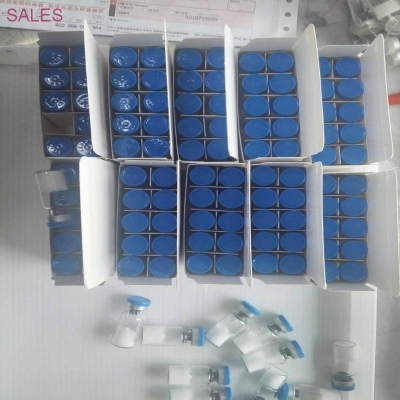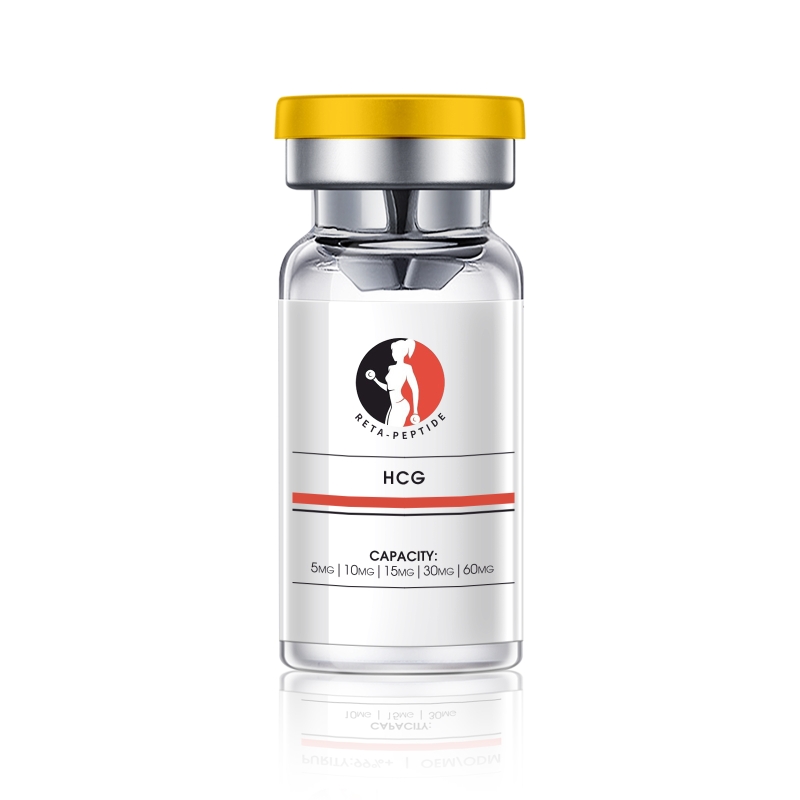-
Categories
-
Pharmaceutical Intermediates
-
Active Pharmaceutical Ingredients
-
Food Additives
- Industrial Coatings
- Agrochemicals
- Dyes and Pigments
- Surfactant
- Flavors and Fragrances
- Chemical Reagents
- Catalyst and Auxiliary
- Natural Products
- Inorganic Chemistry
-
Organic Chemistry
-
Biochemical Engineering
- Analytical Chemistry
-
Cosmetic Ingredient
- Water Treatment Chemical
-
Pharmaceutical Intermediates
Promotion
ECHEMI Mall
Wholesale
Weekly Price
Exhibition
News
-
Trade Service
The cell therapy industry, which had been dormant for several years, suddenly shone through a light and became restless
.
In mid-November, at the third Zhangjiang Cell and Gene Industry International Summit, Li Xiangyu, deputy director of the Shanghai Center for Drug Evaluation and Verification, said that although the "Guidelines for the Quality Management of Cell Therapy Products (Trial)" (hereinafter referred to as the "Guidelines") issued by the State Food and Drug Administration at the end of October were finally released in the form of guidelines without mandatory force, one day this guideline will enter GMP (Good).
Manufacturing Practice of Medical Products), which became an industry regulation
.
For a long time, the relevant approvals of cell therapy have been implemented in a two-track system: it can be submitted to the Food and Drug Administration as a drug or as a medical technology to the health administrative department
.
Li Xiangyu's statement means that the once obscure cell therapy approval and regulatory issues may be clear in the future, and there will be a single regulatory attribution
.
At the same summit, Yang Jinbo, director of the Yangtze River Delta Branch of the State Food and Drug Administration, seemed to confirm the above conjecture: "Cell and gene therapy.
.
.
It is now clear that it can be declared
as a drug.
”
The public statements of the above two important figures in the drug regulatory system coincided with the 2022 Shanghai International Biomedical Industry Week
.
Only half a month ago, Shanghai just issued the industry's blockbuster policy "Shanghai Action Plan for Promoting Cell Therapy Science and Technology Innovation and Industrial Development (2022-2024)" (hereinafter referred to as the "Action Plan").
The Action Plan high-profile announcement that by 2024, Shanghai's industrial scale will reach 10 billion yuan, and the urgency to break through institutional barriers and launch the first "front yard and back factory" model in China, where public hospitals and enterprises jointly establish joint ventures, and transform scientific research results is self-evident
.
Needless to say, the Wei Zexi incident in 2016 and the "shady tumor treatment" incident set off by Dr.
Zhang Yu in 2021 have greatly affected the domestic cell therapy industry and made it difficult
.
"The maintenance of liquid nitrogen repositories and the operation of laboratory sample banks require investment, as well as scientific research and technical personnel to support, and it is
too difficult for enterprises to maintain.
" Yuan Yi, president of the First Affiliated Hospital of Shanghai University (preparation), told Eight Points Jianwen
.
Although all policy trends are limited to clinical research of cell therapy, there is still no mention of when it will be able to go to clinical application, and the fee is far away, but this tortuous industry has once again opened up imagination
.
Regulatory crossroads, fog cleared?
Regulatory crossroads, fog cleared?Human cells are removed, cultured, and then transplanted (injected) into the patient site to replace damaged cells for repair – the simplest method of
cell therapy.
Among them, immune cell therapy is a new generation of cancer treatment with high hopes
.
The characteristics of cell products and their special application methods determine that they can be supervised by the Food and Drug Administration as drugs and supervised by health departments as clinical medical technologies
.
For a long time in the past, the regulatory attribution of cell therapy was unclear and very relaxed, and a large number of unapproved cell therapies were used
in clinical charges.
At that time, on the eve of the outbreak of the "Wei Zexi Incident", a biomedical technology company founded by overseas returnee scientists in Shanghai had just reached a cooperation with a local tertiary hospital, renting two floors of its suburban campus and transforming it into a special needs ward according to the standard of a star-rated hotel, preparing for the clinical application
of cell therapy.
The company's new marketers were told that marketing commissions would be included in the compensation structure
.
In May 2016, the former National Health and Family Planning Commission urgently stopped the clinical application of cell therapy, and only allowed clinical research
.
In December 2017, the State Food and Drug Administration issued the "Technical Guidelines for the Research and Evaluation of Cell Therapy Products (Trial)", and cell therapy officially opened the "dual-track" supervision: cell therapy products that are developed and registered according to drugs are the responsibility of CFDA, and relevant drugs can apply for marketing
after application approval and clinical trials prove safety.
The clinical research of cell therapy is under the supervision
of the former National Health and Family Planning Commission.
Without application transformation channels, the cell therapy industry has fallen into a cold winter
.
Policies have also been tried to loosen
.
On March 29, 2019, the National Health Commission issued the Administrative Measures for Clinical Research and Translational Application of Somatic Cell Therapy (Trial) (Draft for Comments), which stipulates that somatic cell research in medical institutions shall be managed
for the record.
After obtaining safety and efficacy data, cell therapy programs can apply for clinical application and charge for a fee
.
After the draft was issued, there was an uproar
.
The new regulations set a threshold for medical institutions that can carry out somatic cell therapy: medical institutions must be Grade 3A and have undertaken research projects
in the field of somatic cell therapy at or above the provincial and ministerial level.
Very few
hospitals meet the requirements.
More controversial are the provisions
that "clinical research of cell therapy can be carried out after filing" and "charges can be charged for translational applications".
Industry insiders are worried: the drug regulatory department has a very complete set of drug evaluation standards, but the Health Commission has not had similar standards
for cellular immunotherapy.
If you let the hospital file on its own, it is easy to exaggerate the effect
.
This exposure draft was ultimately aborted
.
Under the "fog" of supervision, cell therapy companies generally adopt the "two-legged walk", not only filing with the Health Commission to carry out medical technology clinical trials, but also applying to the Food and Drug Administration for new drug clinical trials
.
For stem cell clinical research, the National Health Commission has established a "double filing" system: that is, clinical research projects and clinical research institutions need to be reported - industry sources revealed that up to now, there are more than 110 institutions and about 120 projects that have been recorded
.
In 2021, two CAR-T cell therapy drugs from Fosun Kite and JW Therapeutics were approved by the State Food and Drug Administration, becoming the only two cell therapy products
approved for marketing.
The National Health Commission has not yet approved a charge
for the clinical transformation of cell therapy declared by medical technology.
In April 2021, Dr.
Zhang Yu caused the "shady scene of tumor treatment"
Among the controversies, whether the NK cell therapy that Ma Jincang, a patient with advanced gastric cancer, spent a lot of money on, was recommended by another doctor, Lu Wei, was also the focus
of controversy.
Although the relevant departments ultimately found no evidence of Lu Wei's interest transmission with the relevant cell therapy companies, this incident cast a shadow on the cell therapy industry again: various places have tightened cell therapy regulations
.
At the end of October 2022, the official website of the Food and Drug Review and Inspection Center of the State Food and Drug Administration released the "Guidelines for the Quality Management of Cell Therapy Products (Trial)", which clearly explained
that the whole process of cell therapy products from the transportation, receipt, production and inspection of donor materials to the release, storage and transportation of finished products should meet the requirements of the Good Manufacturing Practice and its relevant appendixes.
Li Xiangyu revealed at the aforementioned summit that the guidelines were used as an appendix to GMP when they were solicited for comments, but they were still in the form of
guidelines when they were officially released.
Although the guidelines are not as effective as GMP, which is an industry regulation, this document means that the FDA has taken over more regulatory responsibilities
for cell therapy.
And Li Xiangyu said that I believe that this guideline will definitely go to the appendix of GMP, and whether companies do clinical research or follow-up clinical samples, "they must pay attention to this guideline"
.
In fact, in July this year, a document by the Zhejiang Health Commission in response to the NPC proposal also mentioned that the Department of Science and Education of the National Health Commission said that from the national regulatory level, cell therapy has gradually shifted to product supervision, and the drug regulatory department has entered clinical application
after drug approval.
Chi Nan, vice president of Shanghai Cyo Biotechnology Co.
, Ltd.
, said to Eight Points Jianwen that in terms of the biological characteristics and production process of cells, some cell products are suitable for declaration by drugs, while some cell categories may be more suitable for medical technology transformation, so the ideal state is more refined classification supervision
.
"However, from the perspective of industrial development, as a medical technology, it is bound to medical institutions and can only be used
in a single center.
The value of the finished drug is obviously greater, and the valuation obtained in the capital market will also increase
exponentially.
"This is the consensus
in the industry.
According to reports, Cyo Biotech has been deeply engaged in the cell therapy industry for more than 10 years, and currently has 5 medical technology clinical research filing projects, and one product has passed the State Food and Drug Administration IND (Investigational New).
Drug, new drug clinical trial) approval; At the same time, the company cooperates with 5 third-class hospitals in Beijing, Shanghai, Guangzhou, Hangzhou and other places, and is carrying out 5 stem cell clinical research and filing projects
of the National Health Commission.
"For enterprises, there is no problem
which department to supervise.
" Chi Nan said that for enterprises, the most feared is uncertainty
.
A new attempt to transform landing: "front yard and back factory"
A new attempt to transform landing: "front yard and back factory"This time, Shanghai promotes the innovation and industrial development of cell therapy technology, especially emphasizes the ability of scientific and technological innovation and the level of clinical research and transformation when deploying key tasks, and proposes to explore a new model
of "front yard and back factory" cell therapy industry development for the first time in China.
The model of the "front yard and back factory" is the Shanghai Cancer Cell Therapy Technology Innovation Center located in Shanghai Tenth People's Hospital, which is an enterprise technology innovation center jointly established by Shanghai Tenth People's Hospital and Shanghai Pharmaceutical Group, breaking through the institutional barriers
of joint ventures between enterprises and public hospitals.
In the past, "front yard and back factory" was synonymous with charging for clinical applications of cell therapy, "supervision is very loose, as long as companies and hospitals have a record, symbolically submit some materials, they can go to charge patients
.
" The "Action Plan" in Shanghai has given a new connotation
to "front yard and back factory".
Relevant people analyzed to Eight Points Jianwen that the "front yard and back factory" is an innovative attempt to promote the integration of obstetrics and medicine, and the doctors of the "front yard" are liberated from the preparation link and focus on clinical diagnosis and formulating plans, and the "back factory" is in the hospital to prepare cell therapy products, which are directly used on patients after preparation, faster and closer
.
"It's not just treatment, it's probably easier to research
.
"
"This kind of cooperation also has certain conditions, in case there is no such a big place in the hospital can not be done, there will be no 'front yard and back factory', not to say that everything must be carried out in this way," the person said, the policy only plays a role in promotion, but also needs the subject to be voluntary
.
In the interview, Eight Points Jianwen learned that other large tertiary hospitals are not very interested in the "front yard and back factory" model
.
Principal Investigators (Principal Investigators) in hospitals
PI, principal investigator) almost all have clinical research projects
in collaboration with companies.
For enterprises, it is not difficult
to find cooperative hospitals.
A cell therapy company executive said that the hospitals he visited "will have a very strong desire
for the clinical transformation of our cell therapy.
" ”
In clinical projects cooperated between general hospitals and pharmaceutical companies, pharmaceutical companies are responsible for contributing money and technology, hospitals provide clinical resources, and rarely set up joint ventures
.
"Shanghai's hospital management system is relatively unique, and the Shanghai Shenkang Hospital Development Center has the function of 'Medical State-owned Assets Supervision and Administration Commission', which may make it legally possible for public hospitals to have joint ventures with enterprises to a certain extent," said an executive of a biotechnology company in Nanjing, adding that the "front yard and back factory" model is difficult to replicate
in other places.
In fact, what enterprises value most is Shanghai's industrial environment and its status as an "international gateway" to facilitate enterprises to "go to sea"
.
Among the approved cell and gene drug clinical trial projects in China, Shanghai occupies half of the country
.
Some industry enterprises said to Eight Points that to develop the cell therapy industry, Shanghai's industrial environment is almost the best
in China.
Beiheng Biotechnology Co.
, Ltd.
, also in Nanjing, has invested in setting up a research and development center
of thousands of square meters in Shanghai this year.
Han Lu, chief commercial officer of Beiheng Biologics, said that he hopes that more than half of his business will come from overseas
in the future.
This idea is more common among enterprises and should be one of the reasons for Shanghai's
industrial agglomeration.
Professor Ding Gang, director of the oncology department of Shanghai International Medical Center, told Eight Points that in terms of cell and gene therapy, the safety of products, the comprehensive treatment capabilities of medical institutions, data integrity and real-world research are crucial
.
A major bottleneck in domestic biomedical research and development is data
.
For a long time, when Ding Gang went out for meetings or lectures, he would mention the case of the small town of Framingham: it is located next to Boston in the United States and has only 28,000
residents.
Backed by neighboring Boston University and Harvard Medical School, research on cardiovascular disease based on local populations has lasted for more than 70 years and has published more than 3,000 papers
.
"The clinical data collected by the hospital is application-oriented, and we also need our own research-oriented database", Ding Gang advocated the top-level design of a high starting point, and established Chinese group's own biobank and database to provide strong support
for innovative drug research and development and "going overseas".







